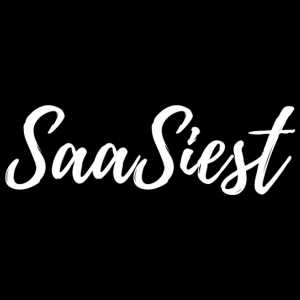Founders have way more power now than ever, and there are multiple ways to fund your business. In this session, Nathan Latka, CEO at GetLatka.com & FounderPath, shares his capital raising views and six different capital paths to follow potentially.
The Secondary Is Your Key to Wealth
Getting a secondary is crucial if you want to ensure wealth from your SaaS company. In a primary round, you issue new shares and raise capital for the company. In a secondary, you’re selling shares that already exist, and the money goes to the shareholder – in this case the founder, employees, or early investors. One great thing about a secondary is that it takes some of the pressure off a successful IPO with lockup terms, as the early birds get rewarded.
If you don’t do a secondary and decide to hold shares until the IPO, some problems can arise. Not only is it really hard to do that, but it’s also difficult to sell the shares since the stock might crash. So when you’re raising money, always ask to have a percentage of the money as a secondary. Asking for a percentage rather than a sum of money is better, as the latter might make you look greedy. However, you can’t do a secondary if you don’t have control over the company.
The Newspaper Stand Story to Learn From
You can’t do a secondary if you don’t have control. Nathan learned this the hard way, when he lost control over his previous company. The year was 2011, and in Blacksburg, Virginia, Nathan associated success as a tech founder with being on the front page of the Sunday newspaper, which he ended up accomplishing. What Nathan didn’t know was that this was the beginning of the end. When looking at his board deck, you can see that the total revenue started to decline as soon as the company raised funds. Employees thought they didn’t need to be creative anymore and that problems were fixable by simply throwing money at them. The company might not have crashed, but it slowly died.
The cap table also became what Nathan calls the “blender cap table,” where investors took 19% in the Series A round, but the total dilution ended up being 35 to 40 percent. Here Nathan lost control over his company, which is sadly commonly occurring in the SaaS industry. Later, Nathan got a cash offer for his company at $6.5m, which for a 22-year-old is pretty crazy. But because they had earlier raised money at a higher valuation, he couldn’t sell his company.
How to Keep Equity and Grow Big
How to optimize founder wealth through these six capital options today:
- Equity
Everyone knows about equity, but very few know about the actual cost that comes with it. If you really believe in yourself, think about what that 10 or 20% often sold in the seed round will be worth in three years. The true cost usually ends up being around 40%+.
- Safe
Safe stands for simple agreement for future equity and is usually done for about $1m. A safe round is uncapped with no discount rate, which makes it very founder-friendly. These rounds are very popular in the States, and the actual cost comes in at about 30%+.
- Seal
Seal is an experiment that’s not really working out. Essentially it’s a way for the company to buy back previously sold equity, but for three times the earlier price. This is a small asset class with only around $100m deployed, and the true cost lands at about 25%+.
- RBFs
Revenue-based financing (RBFs) are very popular in the SaaS community. The investor gives you 5, 6, or 7 times your mARR upfront, and you pay it back over a year + interest. One disadvantage with RBFs is that you can get hurt if you grow really fast. This is because the payment plan is structured as a percentage of the mARR, and if your mARR grows rapidly you’ll end up paying the loan back much faster, with the extra interest still needed to be paid. The actual cost of an RBF is around 20%+.
- Term Loans
Banks give out term loans, and an example is that you take out $2M today and pay it back in 4 years from now + interest. However, you need some sort of revenue to access a term loan. Newer companies might have a hard time getting a term loan if they aren’t beyond the seed round, as many banks don’t want to underwrite the business, but rather the money in the bank. True cost lands at about 10%+.
- Bank Debt
Perhaps the most popular for established SaaS companies, bank debt is the cheapest capital available when you have a lot of revenue and a high valuation. Bank debt is also a popular tool for mature SaaS companies to drive growth through M&A. The cost of bank debt is around 4-10%+.




